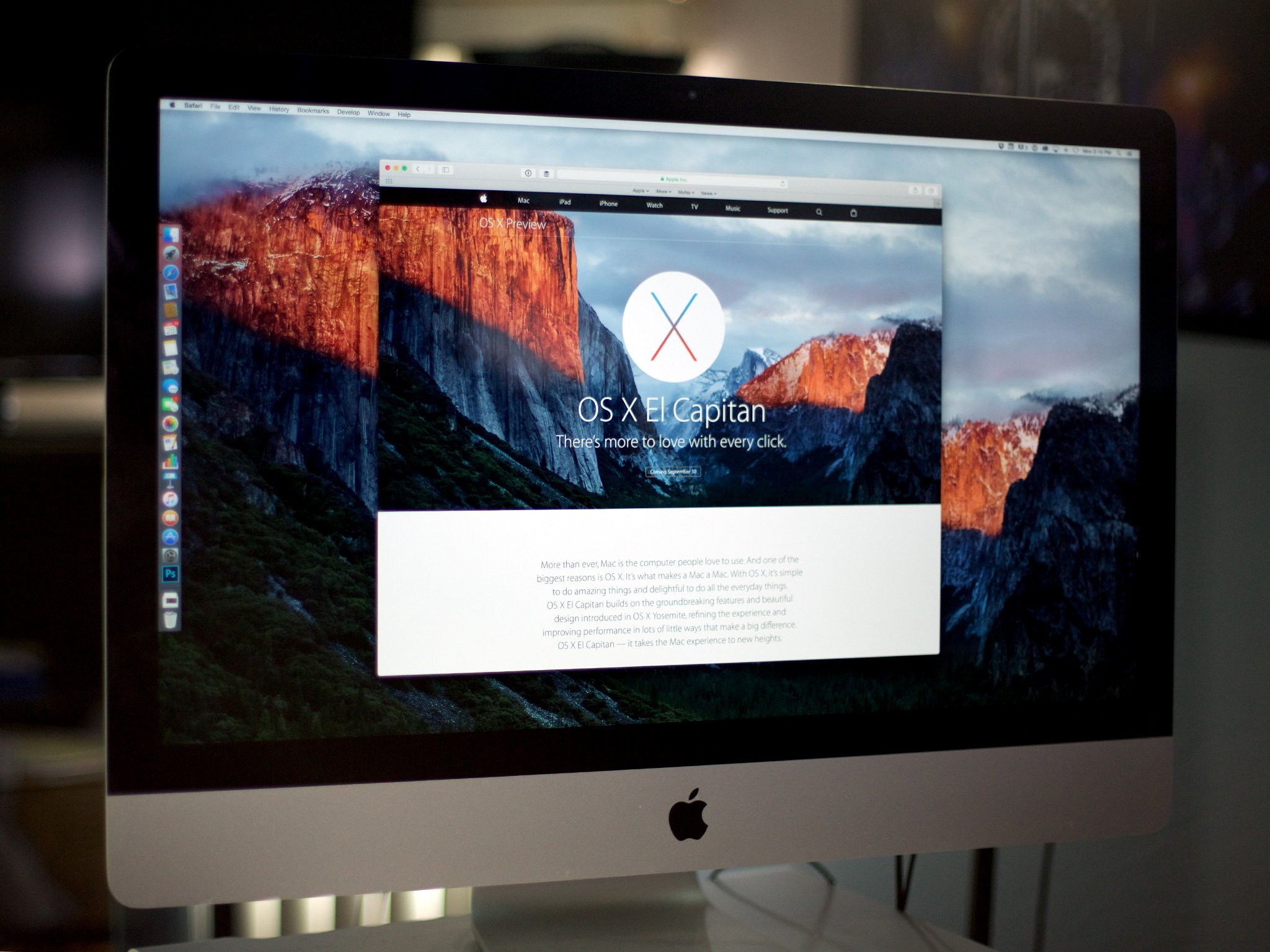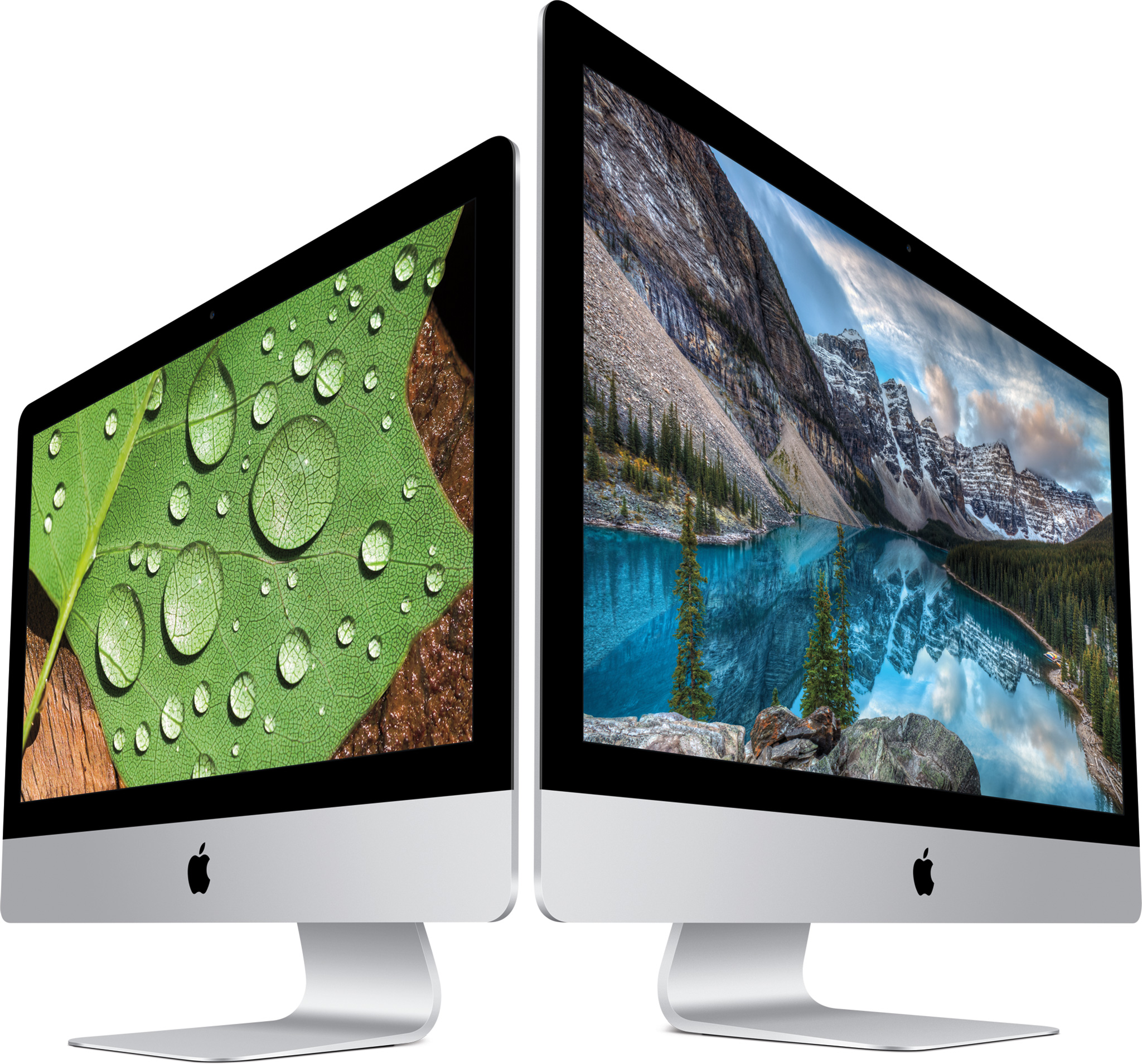4K and 5K iMac FAQ: Everything you need to know about Apple's latest computers

If you've been waiting for the entire iMac line to go Retina, it's your lucky day: Apple on Tuesday announced the arrival of the 4K 21.5-inch iMac to its retail and online stores. In addition, the existing 27-inch iMac with Retina 5K display has been improved beyond even last year's spectacular standards. Both have new Intel processors, graphics options, and storage options, along with new Magic Keyboard, Magic Mouse 2, and Magic Trackpad 2 accessories. The best all-in-one desktops in the world have just gotten better, and here's everything you need to know about their new internals and accessories.

What's the resolution of the new 21.5-inch Retina 4K iMac display?
4K, of course! Well, technically even better than 4K: Video 4K is 3840-by-2160 pixels (twice the 1920-by-1080-pixel range of 1080p), or 8.3 million total pixels. Apple's Retina 4K panel, however, is 4096-by-2304—9.4 million pixels in total, and 4.5 times as many as its predecessor. That makes the new 21.5-inch Retina 4K iMac more than twice as sharp as the 21.5-inch iMac of the prior year.
What's more, Apple has also increased the display's color space by 25 percent as well. Beyond sRGB, the iMac has gone to a full P3-based gamut for even truer, more vibrant, and more accurate colors than ever before. That makes photos, videos, and pretty much everything look not only better—but more lifelike as well.
P3-based what now?
DCI-P3 is the color space used by digital movie theaters to achieve the widest gamut possible. Since everything from DSLR to professional video cameras is now capable of shooting beyond sRGB and into DCI-P3, Apple wants to make sure the iMac is capable of displaying it.
To achieve this, the company has upgraded its displays from the standard blue-biased Light-Emitting Diodes (LED) used to illuminate the iMac's display. The new iMac instead uses a more advanced red-green phosphor LED for better balance and wider range. Each panel is also individually color calibrated at Apple's factories using spectroradiometers, and the color management built into OS X keeps things consistent across apps.
Does the 27-inch Retina 5K get the new, higher-gamut panel as well?
It does! The 27-inch's resolution stays the same at 5120x2880, or 14.7 million pixels, but its color space has likewise been updated to a P3-based gamut for the same 25 percent improvement and truer, more vibrant, more accurate colors.
So these are serious displays?
Just a little bit. They'll be great for legibility, which includes everything from reading webpages or iBooks to writing email and working with documents. And, of course, photographers and videographers will love them.
iMore offers spot-on advice and guidance from our team of experts, with decades of Apple device experience to lean on. Learn more with iMore!
What about processors? Tell me about the processors!
The 21.5-inch Retina 4K iMac ships with Intel's fifth-generation "Broadwell" processors. They start at a 3.1GHz quad-core Intel Core i5, and are configurable up to a 3.3GHz quad-core Intel Core i7. The computer's graphics power is handled by Intel's integrated Iris Pro Graphics 6200 card.
The 27-inch Retina 5K iMac, in contrast, ships with Intel's sixth-generation quad-core "Skylake" processors. They start at a 3.2GHz quad-core Intel Core i5, can step up to a 3.3GHz quad-core Intel Core i5, and are configurable up to 4.0GHz quad-core Intel Core i7.
Graphics options for the Retina 5K iMac include:
- AMD Radeon R9 M380 with 2GB GDDR5 video memory
- AMD Radeon R9 M390 with 2GB of video memory
- AMD Radeon R9 M395 with 2GB of video memory.
- AMD Radeon R9 M395X with 4GB of GDDR5 video memory.
Wait, rewind: The Retina 5K iMac is leapfrogging Broadwell and going straight to Skylake?
Indeed! It's the same 14-nanometer process as Broadwell, but with a redesigned microarchitecture that brings better performance at greater efficiency.
But no Skylake for the Retina 4K iMac?
Intel hasn't released the Skylake version of the chips used in the 21.5-inch Retina 4K iMac yet. Apple is, however, using the latest versions of the Broadwell chips released just past summer.
How much memory can the new iMacs take?
The 21.5-inch Retina 4K iMac starts at 8GB and is configurable up to 16GB. Unfortunately, you can't change that post-purchase, so make sure you configure your maximum RAM during purchase.
The 27-inch Retina 5K iMac starts at 8GB and is configurable up to 32GB. It retains four user-accessible SO-DIMM slots, so you can upgrade later if you want to.
Both iMacs ship with faster 1867MHz DDR3 memory as well.
Hit me with the storage options!
You can get both the 21-inch Retina 4K iMac and 27-inch Retina 5K iMac with old fashioned hard drives if you really want to: 1 TB 5400-rpm for the Retina 4K, and 1 TB 7200-rpm for the Retina 5K.
More compelling are the Fusion Drives that combine the capacity of hard drives with the performance of flash drives. For the Retina 4K iMac, you can get:
- 2 TB fusion drive with 128GB of flash
For the Retina 5K iMac, you can get:
- 2 TB fusion drive with 128GB of flash.
- 3 TB fusion drive with 128GB of flash.
There's also a new, lower-priced Fusion Drive option for both models:
- 1 TB hard drive with 24GB of flash.
24GB... is that enough to do anything?
It's enough to store super-important files to make booting, waking from sleep, launching apps, and opening your most-used documents much faster. For anything else, you'll want a beefier Fusion Drive. (Or pure flash storage...)
So the pure flash drive options are still there?
Absolutely! You can get the 21-inch Retina 4K iMac with:
- 256 GB of flash storage.
- 512 GB of flash storage.
Or the 27-inch Retina 5K iMac with
- 256 GB of flash storage.
- 512 GB of flash storage.
- 1 TB of flash storage.
This generation of flash storage is 2.5 times faster than the previous generation, as well—hitting 2 GB/s!
What kind of connectivity do the new iMacs have, and how fast is it?
Both the 21-inch Retina 4K iMac and 27-inch Retina 5K iMac have:
- Two Thunderbolt 2 ports for up to 20 Gbps transfer speeds to external storage
- SDHC card slot
- Four USB 3.0 ports
- Gigabit Ethernet
- 3.5mm headset jack
- 802.11ac Wi-Fi clocking in at up to 1.3 Gbps
No Thunderbolt 3 on the Retina 5K iMac?
Nope—not this year.
Do the new iMacs come with the new Magic accessories?
They do! The 21-inch Retina 4K iMac and 27-inch Retina 5K iMac both come with the new Magic Keyboard and Magic Mouse 2, with the new Magic Trackpad 2—with Force Touch!—as an option.
If you'd rather the Magic Trackpad 2 to the Magic Mouse 2, you simply pay the difference.
OS X El Capitan?
It's factory installed!
What about VESA mounts?
You can get versions of both the 21.5-inch Retina 4K iMac or the 27-inch Retina 5K iMac with built in VESA mounts.
I'm intrigued! When and how much?
The 21-inch iMac with Retina 4K display is available from Apple.com, Apple Retail, and select authorized resellers starting at $1499; you can still get older models starting at $1099 and $1299.
The 27-inch iMac with Retina 5K display is available in three configurations from Apple.com, Apple Retail, and select authorized resellers starting at $1799, $1999, and $2299.
Exciting! You'll have more information on all of this, right?
Lots more! Stay tuned for our hands on impressions coming soon. Got any questions for us in the meantime? Leave us a comment!

Rene Ritchie is one of the most respected Apple analysts in the business, reaching a combined audience of over 40 million readers a month. His YouTube channel, Vector, has over 90 thousand subscribers and 14 million views and his podcasts, including Debug, have been downloaded over 20 million times. He also regularly co-hosts MacBreak Weekly for the TWiT network and co-hosted CES Live! and Talk Mobile. Based in Montreal, Rene is a former director of product marketing, web developer, and graphic designer. He's authored several books and appeared on numerous television and radio segments to discuss Apple and the technology industry. When not working, he likes to cook, grapple, and spend time with his friends and family.
